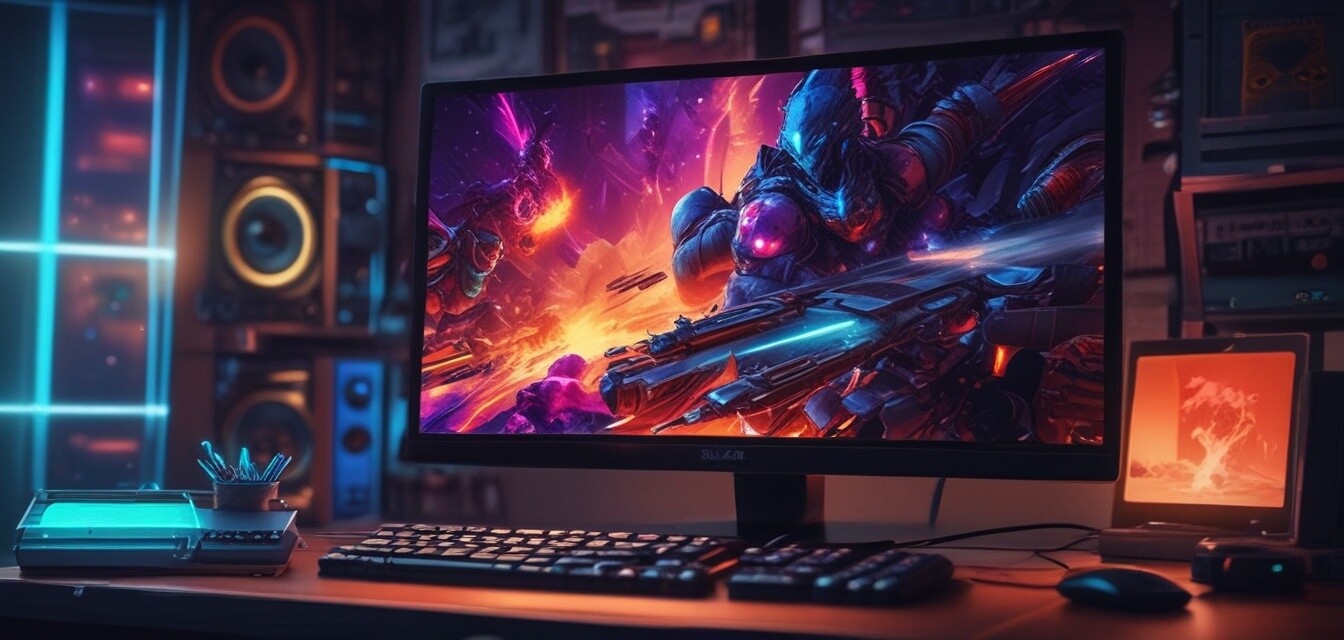
A Deep Dive into OLED Monitor Specifications
Key Takeaways
- OLED technology delivers superior color accuracy and contrast compared to traditional monitors.
- Key specifications to consider include resolution, refresh rate, input lag, and response time.
- Understanding these specifications can help you choose the best OLED monitor for your gaming needs.
When it comes to enhancing your gaming experience, an OLED monitor stands out as a premium choice. The specifications of these monitors hold the key to their performance and user experience. In this article, we will analyze the key specifications you should consider when purchasing an OLED monitor.
Understanding OLED Technology
Organic Light Emitting Diode (OLED) technology is at the forefront of display innovation. Unlike traditional LCD monitors, OLED panels emit their own light, allowing for deeper blacks and more vibrant colors. This results in a more immersive viewing experience, which is essential for gamers who seek to maximize their performance.
Key Specifications to Consider
| Specification | Description | Impact on Performance |
|---|---|---|
| Resolution | Determines the clarity of the image displayed. | A higher resolution provides more detail, enhancing the visual experience. |
| Refresh Rate | The number of times the display refreshes per second. | A higher refresh rate results in smoother motion and less motion blur. |
| Input Lag | The delay between a command (like pressing a button) and the display reacting to it. | Lower input lag is crucial for real-time response in gaming. |
| Response Time | The time it takes for a pixel to change from one color to another. | Shorter response times reduce ghosting effects in fast-paced games. |
| Color Gamut | The range of colors that the monitor can display. | A wider color gamut results in more vibrant images and deeper contrasts. |
Resolution
Resolution is one of the most critical specifications when selecting an OLED monitor. Common options include 1080p, 1440p, and 4K. Here’s how they stack up:
- 1080p: Good for casual gamers, typically offers decent performance.
- 1440p: A popular choice among gamers providing a balance between performance and visual quality.
- 4K: Best for those seeking the highest detail and clarity, but requires powerful hardware.
Refresh Rate and Input Lag
A monitor's refresh rate, measured in hertz (Hz), is crucial for gaming. A refresh rate of 60 Hz is standard but may not be sufficient for fast-paced gaming.
Modern OLED monitors might offer refresh rates up to 240 Hz. To maximize the benefits of high refresh rates, ensure your graphics setup supports them. Additionally, G-Sync and FreeSync support can help reduce tearing and stuttering for a smoother experience.
Response Time and Ghosting
Response time, measured in milliseconds (ms), informs how quickly a monitor can change the color of its pixels. Fast response times help minimize ghosting effects, especially in high-speed gaming scenarios.
"In gaming, every millisecond counts. A monitor with a low response time ensures you don’t miss critical moments."
Color Gamut
The color gamut influences how accurately colors are represented. A monitor with a wide color gamut can exhibit richer colors that are essential for visual storytelling in games.
Many gaming monitors now cover a significant percentage of the Adobe RGB and DCI-P3 color spaces, providing colorful visuals and more realistic images.
Conclusion
Choosing the right OLED monitor involves understanding various specifications that can significantly impact your gaming experience. Whether you're looking for 4K resolution, high refresh rates, or superior color accuracy, knowing these specs can guide you to the best product for your needs.
With the insights provided in this guide, you are now equipped to make an informed decision and enjoy the incredible advantages an OLED monitor can bring to your gaming setup!
Tips for Beginners
- Research your favorite games to see what specifications matter most.
- Set a budget but be willing to invest in quality for long-term use.
- Consider your gaming environment - room lighting can affect your monitor selection.
- Check for warranty and return policies, especially with premium OLED monitors.
Pros
- Exceptional color accuracy and contrast.
- Superior response times for fast-paced gaming.
- Vibrant visuals that enhance immersion.
Cons
- Potential for screen burn-in with static images.
- Higher price point compared to traditional monitors.
- May require powerful hardware to maximize capabilities.